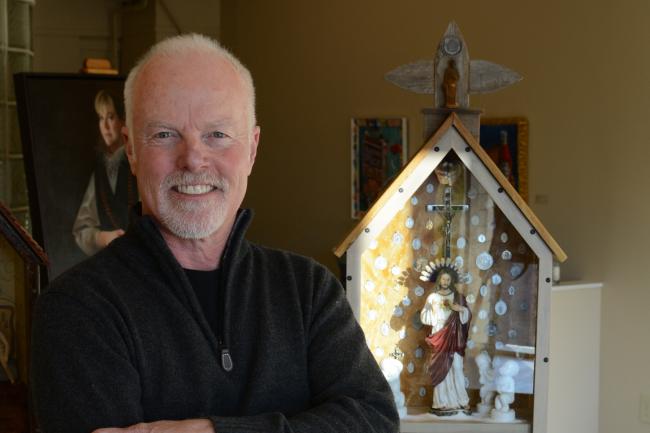As a kid with a camera, he shot rock stars
Mark Daughhetee
Mon, 12/09/2013
by Hannah Danforth
Growing up in Culver City, California, Mark Daughhetee of West Seattle, had the kind of childhood that dreams are made of. He spent his days sneaking onto major motion picture back lots swinging on vines on the set of Tarzan, walking the decks of the HMS Bounty and strolling through the facades of Paris make believe became real. It was his time on those movie sets that called Mark to create the the distinct style of narrative work he has become known for.
In 1967, Mark was inspired to pick up a camera. He studied photography throughout high school and junior college. Then, armed with an Argus Rangefinder 35mm camera, Mark delved into the Southern California counter culture. He documented concerts, political protests, Love-Ins and created iconic images and portraits of Jimi Hendrix, Roger Daltrey of The Who, and Leon Russell (to name a few). With an impressive portfolio of black and white street shots, and the bravado to talk his way into any situation he wished to photograph, Mark Daughhetee, had a lucky start to an impressive career.
After completing his degree at Humboldt University in 1976, he moved back to Los Angeles to look for work. Feeling discouraged by the job market, he decided to follow a college friend to Juneau, Alaska. It was a time that the oil began to flow through the newly constructed pipeline and suddenly the State of Alaska had more money, way more money, than they knew what to do with. It truly was the land of opportunity, the last frontier. So, in February of 1977, Mark packed up all of his belongings into a 1968 VW bug and headed north.
His move to Alaska provided Mark with new opportunities to photograph environmental portraits and hone his craft. It also became the beginning of his professional career. Mark found work in a commercial darkroom for the State of Alaska preparing lithographic negatives for the state press. He moved on to exhibition preparatory work for the the Alaska State Museum and was a graphic designer for the State Department of Education. In 1991, Mark became the Curator of Exhibitions for the Alaska State Museum, a position he held until 2006.
While residing in Alaska, Mark began to revisit some of the fantastic imagery and themes of his youth, photographing mannequins and live people in tableau. By employing the use of props, costumes and methodical, carefully arranged sets, Mark effectively created one act plays captured on film. These collections were metaphors for current events and social commentary.
However, Mark also weaves his personal stories and sentiments into these works as well.
In particular, The Banquet tells the story of Mark's experience with a fast talking curator and the failed accession of one of his works to the Seattle Art Museums permanent collection. In this narrative, Mark views himself as the clown, humbled by his presumptions.
For the past year and a half, Mark has been working on a new series he calls Stations, which continues in line with his previous art, however moving from photography into the physical presentation of his narrative constructions. Mark considers creating these current pieces a natural extension of the tableau work.
Stations are found object sculptures resembling roadside memorials, or spirit houses (sculptures memorializing somebody's passing or to honor people that have been displaced), and are each themed around vintage television shows.
Mark's methods of storytelling may keep changing, however, he has managed to create an unique narrative body of work that shows just how each station (in life) affects where we go next.




